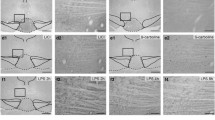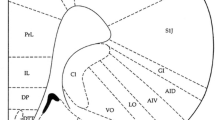Abstract
Rationale
Classical pain tests performed in animals routinely measure evoked nociceptive behaviours. These almost exclusively reflect sensory processing of nociceptive transmission, although a recently described place escape/avoidance paradigm may be used to selectively assess affective pain processing.
Objective
To establish if drugs with proven analgesic efficacy selectively attenuate sensory-discriminative or affective-motivational aspects of nociceptive processing.
Methods
The μ-opioid receptor agonist morphine, the anti-epileptic gabapentin, the anti-depressant duloxetine, the 5HT1A receptor agonist 8-OH-DPAT, the GABAA receptor agonist gaboxadol and the mixed cannabinoid receptor agonist WIN55,212-2 were tested after systemic administration in the chronic constriction injury (CCI) model of neuropathic pain. For the place escape/avoidance paradigm, CCI rats had free access between the ‘non-aversive’ dark and ‘aversive’ light side of an enclosed chamber. Either the injured or non-injured hindpaw was routinely stimulated if the rat was in the dark or light area, respectively. Escape/avoidance behaviour was defined as a shift from the dark to the light area. Mechanical allodynia and hyperalgesia were determined prior to and following escape/avoidance testing.
Results
Morphine (3 and 6 mg/kg), gabapentin (50 and 100 mg/kg), duloxetine (10 and 30 mg/kg) and 8-OH-DPAT (0.1 and 0.5 mg/kg) attenuated the time spent by CCI rats in the light area; gaboxadol (1 and 3 mg/kg) and WIN55,212-2 (0.3 and 1 mg/kg) were ineffective. Only gabapentin and 8-OH-DPAT attenuated mechanical nociceptive behaviours at non-sedative doses.
Conclusions
The place escape/avoidance paradigm may enable discrimination between selected drug classes on distinct components of sensory and affective pain processing in rats with neuropathic pain.




Similar content being viewed by others
References
Backonja M, Beydoun A, Edwards KR, Schwartz SL, Fonseca V, Hes M, LaMoreaux L, Garofalo E (1998) Gabapentin for the symptomatic treatment of painful neuropathy in patients with diabetes mellitus: a randomized controlled trial. JAMA 280:1831–1836
Bardin L, Tarayre JP, Koek W, Colpaert FC (2001) In the formalin model of tonic nociceptive pain, 8-OH-DPAT produces 5-HT1A receptor-mediated, behaviorally specific analgesia. Eur J Pharmacol 421:109–114
Bennett GJ, Xie YK (1988) A peripheral mononeuropathy in rat that produces disorders of pain sensation like those seen in man. Pain 33:87–107
Blackburn-Munro G (2004) Pain-like behaviours in animals—how human are they? Trends Pharmacol Sci 25:299–305
Blackburn-Munro G, Blackburn-Munro RE (2001) Chronic pain, chronic stress and depression: coincidence or consequence? J Neuroendocrinol 13:1009–1023
Blackburn-Munro G, Erichsen HK (2005) Antiepileptics and the treatment of neuropathic pain: evidence from animal models. Curr Pharm Des 11:2961–2976
Blackburn-Munro G, Bomholt SF, Erichsen HK (2004) Behavioural effects of the novel AMPA/GluR5 selective receptor antagonist NS1209 after systemic administration in animal models of experimental pain. Neuropharmacology 47:351–362
Bomholt SF, Mikkelsen JD, Blackburn-Munro G (2005) Antinociceptive effects of the antidepressants amitriptyline, duloxetine, mirtazapine and citalopram in animal models of acute, persistent and neuropathic pain. Neuropharmacology 48:252–263
Bridges D, Ahmad K, Rice AS (2001) The synthetic cannabinoid WIN55,212-2 attenuates hyperalgesia and allodynia in a rat model of neuropathic pain. Br J Pharmacol 133:586–594
Carr GD, Fibiger HC, Phillips AG (1989) Conditioned place preference as a measure of drug reward. In: Liebmann JM, Cooper SJ (eds) The neuropharmacological basis of reward. Clarendon, Oxford, pp 264–319
Christensen D, Gautron M, Guilbaud G, Kayser V (2001) Effect of gabapentin and lamotrigine on mechanical allodynia-like behaviour in a rat model of trigeminal neuropathic pain. Pain 93:147–153
Colpaert FC (1987) Evidence that adjuvant arthritis in the rat is associated with chronic pain. Pain 28:201–222
Colpaert FC, Tarayre JP, Koek W, Pauwels PJ, Bardin L, Xu XJ, Wiesenfeld-Hallin Z, Cosi C, Carilla-Durand E, Assie MB, Vacher B (2002) Large-amplitude 5-HT1A receptor activation: a new mechanism of profound, central analgesia. Neuropharmacology 43:945–958
Craig AD, Dostrovsky JO (1999) Medulla to thalamus. In: Wall PD, Melzack R (eds) Textbook of pain. Churchill Livingstone, UK, pp 183–214
Decosterd I, Woolf CJ (2000) Spared nerve injury: an animal model of persistent peripheral neuropathic pain. Pain 87:149–158
De Vry J, Schreiber R, Melon C, Dalmus M, Jentzsch KR (2004) 5-HT1A receptors are differentially involved in the anxiolytic- and antidepressant-like effects of 8-OH-DPAT and fluoxetine in the rat. Eur Neuropsychopharmacol 14:487–495
Dimond KR, Pande AC, Lamoreaux L, Pierce MW (1996) Effect of gabapentin (Neurontin) on mood and well-being in patients with epilepsy. Prog Neuropsychopharmacol Biol Psychiatry 20:407–417
Dyson A, Peacock M, Chen A, Courade JP, Yaqoob M, Groarke A, Brain C, Loong Y, Fox A (2005) Antihyperalgesic properties of the cannabinoid CT-3 in chronic neuropathic and inflammatory pain states in the rat. Pain 116:129–137
Erichsen HK, Hao JX, Xu XJ, Blackburn-Munro G (2005) Comparative actions of the opioid analgesics morphine, methadone and codeine in rat models of peripheral and central neuropathic pain. Pain 116:347–358
Field MJ, Gonzalez MI, Tallarida RJ, Singh L (2002) Gabapentin and the neurokinin(1) receptor antagonist CI-1021 act synergistically in two rat models of neuropathic pain. J Pharmacol Exp Ther 303:730–735
Fox A, Kesingland A, Gentry C, McNair K, Patel S, Urban L, James I (2001) The role of central and peripheral Cannabinoid1 receptors in the antihyperalgesic activity of cannabinoids in a model of neuropathic pain. Pain 92:91–100
Frolund B, Ebert B, Kristiansen U, Liljefors T, Krogsgaard-Larsen P (2002) GABA(A) receptor ligands and their therapeutic potentials. Curr Top Med Chem 2:817–832
Gimbel JS, Richards P, Portenoy RK (2003) Controlled-release oxycodone for pain in diabetic neuropathy: a randomized controlled trial. Neurology 60:927–934
Goldstein DJ, Lu Y, Detke MJ, Lee TC, Iyengar S (2005) Duloxetine vs. placebo in patients with painful diabetic neuropathy. Pain 116:109–118
Griffin G, Wray EJ, Tao Q, McAllister SD, Rorrer WK, Aung MM, Martin BR, Abood ME (1999) Evaluation of the cannabinoid CB2 receptor-selective antagonist, SR144528: further evidence for cannabinoid CB2 receptor absence in the rat central nervous system. Eur J Pharmacol 377:117–125
Harte SE, Kender RG, Borszcz GS (2005) Activation of 5-HT1A and 5-HT7 receptors in the parafascicular nucleus suppresses the affective reaction of rats to noxious stimulation. Pain 113:405–415
Hunt SP, Mantyh PW (2001) The molecular dynamics of pain control. Nat Rev Neurosci 2:83–91
Hunter JC, Gogas KR, Hedley LR, Jacobson LO, Kassotakis L, Thompson J, Fontana DJ (1997) The effect of novel anti-epileptic drugs in rat experimental models of acute and chronic pain. Eur J Pharmacol 324:153–160
Iyengar S, Webster AA, Hemrick-Luecke SK, Xu JY, Simmons RM (2004) Efficacy of duloxetine, a potent and balanced serotonin-norepinephrine reuptake inhibitor in persistent pain models in rats. J Pharmacol Exp Ther 311:576–584
Johansen JP, Fields HL, Manning BH (2001) The affective component of pain in rodents: direct evidence for a contribution of the anterior cingulate cortex. Proc Natl Acad Sci U S A 98:8077–8082
Kim SH, Chung JM (1992) An experimental model for peripheral neuropathy produced by segmental spinal nerve ligation in the rat. Pain 50:355–363
LaBuda CJ, Fuchs PN (2000a) A behavioral test paradigm to measure the aversive quality of inflammatory and neuropathic pain in rats. Exp Neurol 163:490–494
LaBuda CJ, Fuchs PN (2000b) Morphine and gabapentin decrease mechanical hyperalgesia and escape/avoidance behavior in a rat model of neuropathic pain. Neurosci Lett 290:137–140
LaBuda CJ, Fuchs PN (2001) Low dose aspirin attenuates escape/avoidance behavior, but does not reduce mechanical hyperalgesia in a rodent model of inflammatory pain. Neurosci Lett 304:137–140
LaBuda CJ, Little PJ (2005) Pharmacological evaluation of the selective spinal nerve ligation model of neuropathic pain in the rat. J Neurosci Methods 144:175–181
LaGraize SC, Labuda CJ, Rutledge MA, Jackson RL, Fuchs PN (2004) Differential effect of anterior cingulate cortex lesion on mechanical hypersensitivity and escape/avoidance behavior in an animal model of neuropathic pain. Exp Neurol 188:139–148
LaGraize SC, Borzan J, Peng YB, Fuchs PN (2005) Selective regulation of pain affect following activation of the opioid anterior cingulate cortex system. Exp Neurol (in press)
Le Bars D, Gozariu M, Cadden SW (2001) Animal models of nociception. Pharmacol Rev 53:597–652
Luo ZD, Calcutt NA, Higuera ES, Valder CR, Song YH, Svensson CI, Myers RR (2002) Injury type-specific calcium channel alpha 2 delta-1 subunit up-regulation in rat neuropathic pain models correlates with antiallodynic effects of gabapentin. J Pharmacol Exp Ther 303:1199–1205
Malan TP Jr, Ibrahim MM, Vanderah TW, Makriyannis A, Porreca F (2002) Inhibition of pain responses by activation of CB(2) cannabinoid receptors. Chem Phys Lipids 121:191–200
Melzack R, Casey KL (1968) Sensory, motivational, and central control determinants of pain. In: Kenshalo DR (ed) The skin sneses. CC Thomas, Springfield, pp 423–439
Mitchell VA, Aslan S, Safaei R, Vaughan CW (2005) Effect of the cannabinoid ajulemic acid on rat models of neuropathic and inflammatory pain. Neurosci Lett 382:231–235
Mogil JS, Crager SE (2004) What should we be measuring in behavioral studies of chronic pain in animals? Pain 112:12–15
Morello CM, Leckband SG, Stoner CP, Moorhouse DF, Sahagian GA (1999) Randomized double-blind study comparing the efficacy of gabapentin with amitriptyline on diabetic peripheral neuropathy pain. Arch Intern Med 159:1931–1937
Muzina DJ, Elhaj O, Gajwani P, Gao K, Calabrese JR (2005) Lamotrigine and antiepileptic drugs as mood stabilizers in bipolar disorder. Acta Psychiatr Scand Suppl 426:21–28
Narita M, Kaneko C, Miyoshi K, Nagumo Y, Kuzumaki N, Nakajima M, Nanjo K, Matsuzawa K, Yamazaki M, Suzuki T (2005) Chronic pain induces anxiety with concomitant changes in opioidergic function in the amygdala. Neuropsychopharmacology (in press). DOI 10.1038/sj.npp.13300858 locator-type="URL">DOI 10.1038/sj.npp.13300858
Ohara PT, Vit JP, Jasmin L (2005) Cortical modulation of pain. Cell Mol Life Sci 62:44–52
Patel S, Naeem S, Kesingland A, Froestl W, Capogna M, Urban L, Fox A (2001) The effects of GABA(B) agonists and gabapentin on mechanical hyperalgesia in models of neuropathic and inflammatory pain in the rat. Pain 90:217–226
Pedersen LH, Nielsen AN, Blackburn-Munro G (2005) Anti-nociception is selectively enhanced by parallel inhibition of multiple subtypes of monoamine transporters in rat models of persistent and neuropathic pain. Psychopharmacology (Berl) 182:551–561
Pettit DA, Harrison MP, Olson JM, Spencer RF, Cabral GA (1998) Immunohistochemical localization of the neural cannabinoid receptor in rat brain. J Neurosci Res 51:391–402
Price DD, Dubner R (1977) Neurons that subserve the sensory-discriminative aspects of pain. Pain 3:307–338
Price DD, Barrell JJ, Gracely RH (1980) A psychophysical analysis of experimental factors that selectively influence the affective dimension of pain. Pain 8:137–149
Raja SN, Haythornthwaite JA, Pappagallo M, Clark MR, Travison TG, Sabeen S, Royall RM, Max MB (2002) Opioids versus antidepressants in postherpetic neuralgia: a randomized, placebo-controlled trial. Neurology 59:1015–1021
Rode F, Jensen DG, Blackburn-Munro G, Bjerrum OJ (2005) Centrally-mediated antinociceptive actions of GABA(A) receptor agonists in the rat spared nerve injury model of neuropathic pain. Eur J Pharmacol 516:131–138
Schomburg ED (1990) Spinal sensorimotor systems and their supraspinal control. Neurosci Res 7:265–340
Seltzer Z, Dubner R, Shir Y (1990) A novel behavioral model of neuropathic pain disorders produced in rats by partial sciatic nerve injury. Pain 43:205–218
Watson CP, Moulin D, Watt-Watson J, Gordon A, Eisenhoffer J (2003) Controlled-release oxycodone relieves neuropathic pain: a randomized controlled trial in painful diabetic neuropathy. Pain 105:71–78
Woolf CJ (1984) Long term alterations in the excitability of the flexion reflex produced by peripheral tissue injury in the chronic decerebrate rat. Pain 18:325–343
Young LT, Robb JC, Patelis-Siotis I, MacDonald C, Joffe RT (1997) Acute treatment of bipolar depression with gabapentin. Biol Psychiatry 42:851–853
Zimmermann M (1983) Ethical guidelines for investigations of experimental pain in conscious animals. Pain 16:109–110
Acknowledgements
L.H.P. was supported by the Danish Academy of Technical Sciences. Expert technical assistance was provided by Nete Ibsen, Helene Dyhr Pedersen and Margit Jeppesen. We would like to thank Dr Jørgen Scheel-Kruger for many helpful discussions and comments.
Author information
Authors and Affiliations
Corresponding author
Rights and permissions
About this article
Cite this article
Pedersen, L.H., Blackburn-Munro, G. Pharmacological characterisation of place escape/avoidance behaviour in the rat chronic constriction injury model of neuropathic pain. Psychopharmacology 185, 208–217 (2006). https://doi.org/10.1007/s00213-005-0281-3
Received:
Accepted:
Published:
Issue Date:
DOI: https://doi.org/10.1007/s00213-005-0281-3




